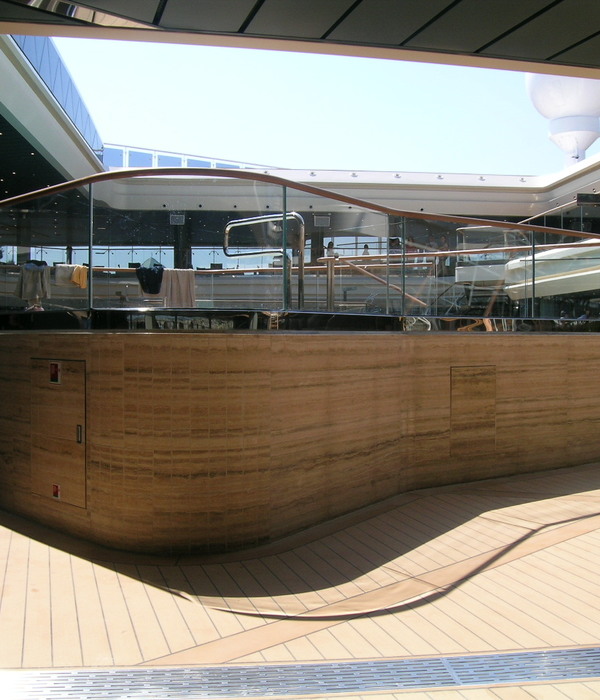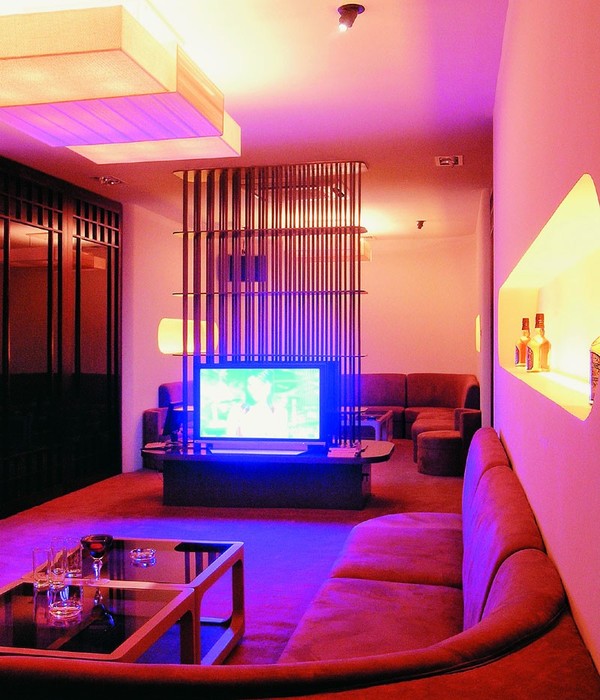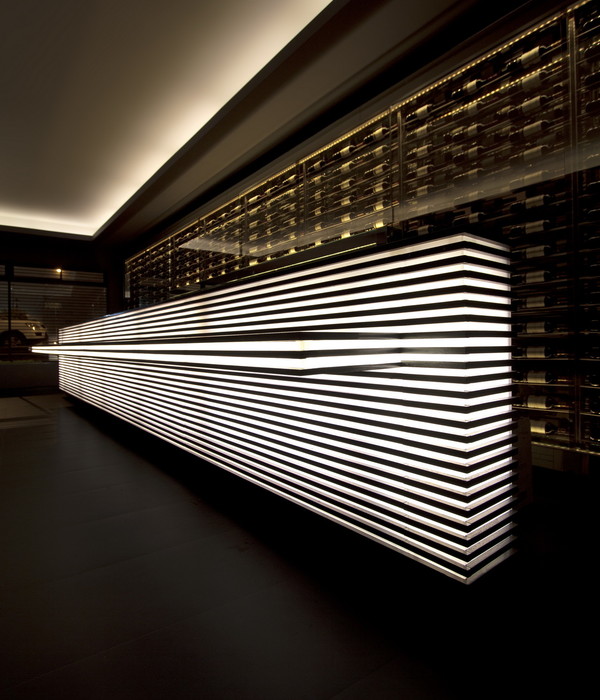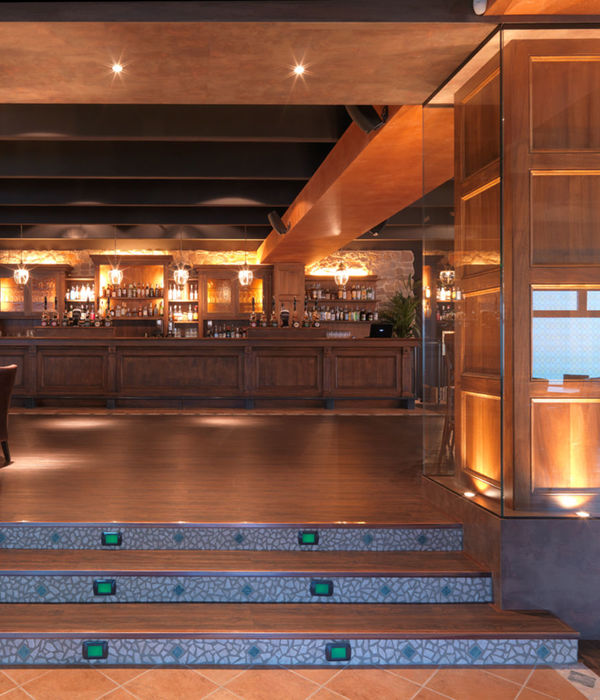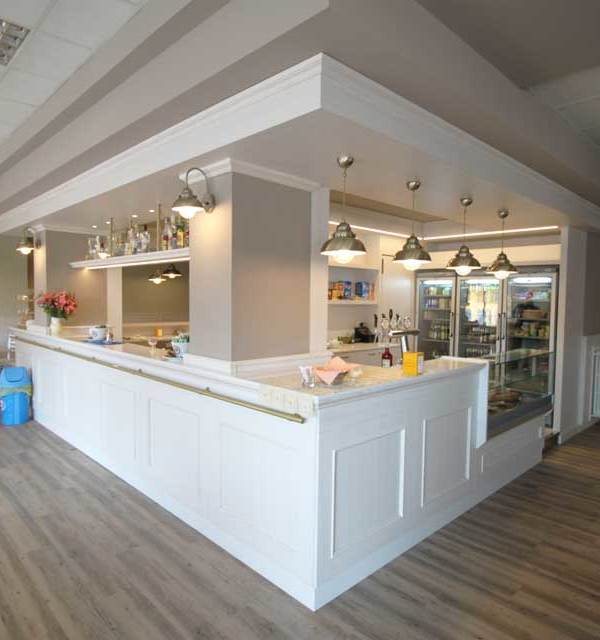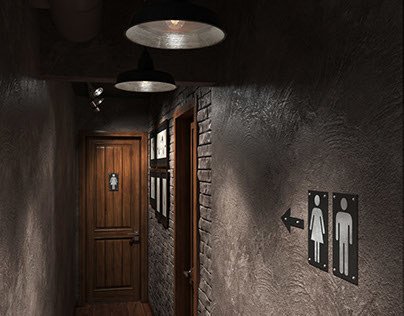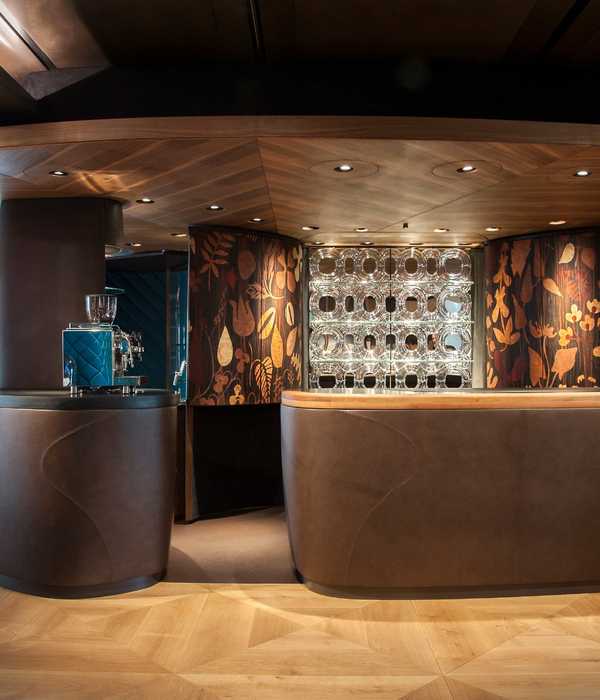直至20世纪中期,位于里斯本西北部的Benfica地区都还被大量的农业用地占据。穿行而过的Ribeira de Alcântara水系,成为土壤肥沃的基本保障,溪流与泉涌构成了这里的地貌特征。其中坐落于场地中的Fonte Nova(英文名称New Fountain)是该地最著名的景点之一。里斯本市区最主要的Estrada de Benfica大道也在该场地中穿过。
Till mid of the 20th century, the site area was a farming territory in Benfica, northwest Lisbon. A water stream (Ribeira de Alcântara) provided plenty water to assure fertile lands. Water streams and fountains were a landmark. Fonte Nova (in eng. New Fountain) became the popular name from witch the area was known. The site was crossed by an important road in Lisbon’s urban fabric: Estrada de Benfica.
▼鸟瞰场地,aerial view
城市辐射道路2a Circular建造于十六世纪,这座悬空的高架天桥将场地一分为二。这一情况为场地环境带来了极大的影响,原有的农作场地被阻挠,城市道路被阻断。近五十年间,场地被荒废并用作停车场,大量停靠的城市车辆夺取了当地的地貌特征。
In the sixties, the radial city road (2a Circular) was built. A flyover of 2ª Circular divided the site in half. This condition had a big impact in the area: the farms were destroyed and the continuity of local roads and pathways was broken. Over the years, the site became a parking lot, and end up using all the space available. For 50 years, the massive presence of parked cars was the main site feature.
▼高架桥将场地一分为二,the radial city road divided the site in half
2015年,里斯本市政厅颁布了城市发展总体规划议案“城市的每个街区”来改善城市社区的公共环境。该项目涉及场地面积达3.5公顷,通过全新地面铺装的场地规划,将被停车场和高架桥分割的城市用地归还给社区生活。
In 2015, Lisbon City Hall, released an urban development master plan to improve the city neighborhood’s squares: “Uma Cidade em cada Bairro”. The project area was 3,5 hectares and the strategy was to define an extended paved area that aimed to re-establish the connections lost when the parking lot and flyover was built.
▼规划后的场地环境,after intervention
项目具体措施为将原厂地中的一半停车面积用于休闲空间和慢速交通。并以此吸引各个年龄层的城市居民来此闲游休憩。场地的使用可以是活跃的或者是安静的,但无论如何,它都将是一个简单又易于亲近的公共环境。人行道路在全新的规划下变得更加流畅和安全。慢行路线将场地与里斯本慢行交通网络相连接。
This operation was an opportunity to reduce in 50% the parking lot area in favor of soft mobility and leisure spaces. The project aimed to be attractive to people from all ages, to be inclusive, friendly and casual. The use of space can be active or contemplative. The public space should be easily understood by all. The sidewalks width increased for pedestrian safety and comfort and suitable for special mobility needs. A bike lane was implemented connected to Lisbon’s bike lane network.
▼慢行交通规划,the lane plan
场地设计充分利用了几棵现有的tipuana-tipu树木。所有植被都得到了良好的保留与保护,并预留充足空间让它们自由生长。绿荫环绕,为场地内的休闲环境增色不少。混凝土地面铺装,搭配如孤岛般零星的休闲小品,营造了怡人的休闲环境。
The square design takes advantage of the existing trees – tipuana-tipu. The forest was conserved, keeping all the specimens, giving them room to grow. The tree’s shadows and clearings became an important site feature. The pavement is in concrete, in specific locations it’s punctuated by leisure spaces in the form of “islands”.
▼场地中的树木植被被保留,the trees are conserved
▼混凝土地面铺装搭配如孤岛般零星的休闲小品,营造了怡人的休闲环境,the pavement is in concrete, in specific locations it’s punctuated by leisure spaces in the form of “islands”
环不同活动空间而设的坐席,成为了景观环境里的群聚之处。游人在“孤岛”处聚集闲坐。闲散的“孤岛”坐席形成了环境里的视觉景观。随着天色的变化,人们在不同荫蔽环境下的坐席间移动。独自游玩的人们或就坐于树下阅读书籍、放松心情,而群聚的人们则闲适散漫、畅谈小憩,场地四处皆是怡人画面。
The benches around the “island” areas, the playground, dog park, and the coffee terraces on the area became gathering spots. People gather around the “islands”, sitting on the benches. The “islands” are perceived as visually interesting. Depending on the weather, people, alone or in groups, look for shaded or sunny areas to sit. When alone, people tend to read, or relax under the trees. When in a group people tend to sit in informal ways, facing each other’s to talk.
▼多种形式的混凝土座椅,the multi-type concrete seats
此次设计选用坚实和易于修缮的建筑材料,并多采用vidraço或花岗岩等适合各种活动用途的本地材料。通常情况下,被移除的某些场地材料都可以被重新利用。在该项目中,这些来自于16世纪的铺装材料全部被回收并加以利用。车行道路宽度被削减以降低车行速度,公共交通道路被重新规划以更好的服务于场地需求。
The materials are resistant and easy to maintain. The choice was to use materials common in Lisbon’s public spaces like the popular “vidraço” stone or granite suitable for each activity. In many cases it was possible to clean and reuse pavements found onsite like, in one “island”, where a pavement with a sixties design was totally reused. The road lanes were modified: the car lanes widths were reduced to lower car speed and the bus lanes were planned for better performance.
▼混凝土坐席细部,detail of the concrete seats
混凝土坐席围合出不同的活动空间,这些特别设计的坐席有四种不同形态:直线型,曲线形,和拥有不同靠背的两种独立长椅。零星的建筑小品组织成不同的公共空间,如凉亭、梯台、泉池、宠物公园、游乐场和两个花园。
The islands forms are limited by concrete bench boundaries. There are 4 bench types: straight, curve and 2 types of individual seats with different back angles. Inside each of these “islands” different activities take place. There are kiosks and terraces, a fountain, a dog park, a playground and two garden areas.
▼宠物游乐场,the dog park
▼儿童游乐场,the playground
全新的LED街灯照明系统为场地营造了优秀的夜间活动场所。柔和的游乐场灯光和明亮的街边照明,让景观环境丰富又多彩。高架桥下的照明空间,让此处活动二十四小时不受阳光和雨水的干扰。
The area covered by flyover is lit during the night allowing 24 hours of multiple activities, protected by the sun and by the rain.For night use of the public space, it was installed a new system of LED street lights. A warm tone color light faces the ground and a cooler tone light faces the tree’s crowns.
▼桥下空间,space under the bridge
由于涉及扩建工程,该项目最终决定被分期进行。一方面,分阶段的场地规划令项目对周边日常生活的影响降至最低。另一方面,随着分期工程的进行,使用者将见证它的变化,并逐渐的适应新环境所带来的不同体验。场地改造开始之前,这一社区的居民缺少公共活动空间。此次改造让Praça Fonte Nova逐渐融入了居民的社区生活,为人们带去自由和安全的日常休闲环境。
Because of the intervention area with a large extension, the construction works were made by phases. This strategy allowed, on one hand, to decrease the impact of the works in the user’s daily lives; on the other hand, it was possible for the users to gradually get to know the renovated space and use it. Pedestrian circulation became more fluid and safe, protected and away from the car circulation. Before the intervention, the neighbourhood lacked a space of public social interaction. Praça Fonte Nova is gradually becoming that space. A space that welcomes all, a place of freedom and safety, where a sense of community takes place.
▼夜间活动,night life
▼总平面图,master plan
▼景观节点平面,Landscape node
{{item.text_origin}}

